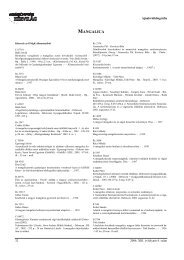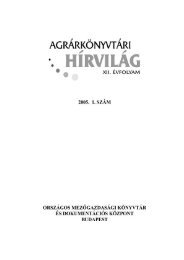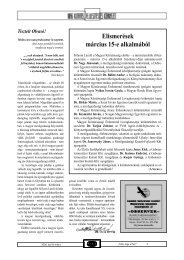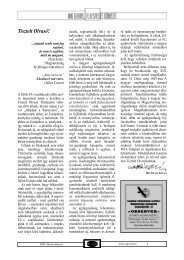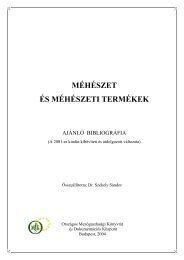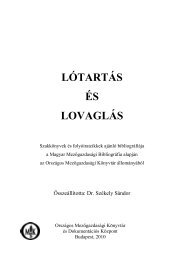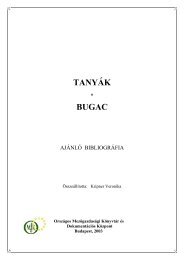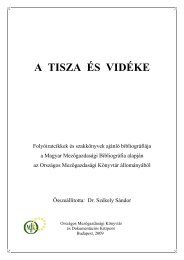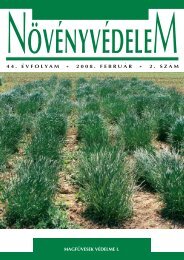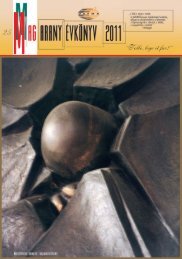hUNGARiAN AGRicUltURAl RESEARch
hUNGARiAN AGRicUltURAl RESEARch
hUNGARiAN AGRicUltURAl RESEARch
Create successful ePaper yourself
Turn your PDF publications into a flip-book with our unique Google optimized e-Paper software.
Fig. 4: Controlling yield in BBCS-method vineyard in California.<br />
Spring of 2003<br />
Fig. 3: BBCS cordon branch<br />
vine-stock at budding<br />
(Sopron – Oldenburg, 2005)<br />
Special tractor driven rotating brushes rub off swelling main buds on<br />
vine-stocks. Width of swath can be adjusted even while machinery is<br />
in motion.<br />
Due to abundance of shoots<br />
canes grow short. Those shaded<br />
by foliage grow shorter yet than<br />
those in sunlight. New shoots<br />
naturally seek sunlight. Vinestocks<br />
on photo have not been<br />
pruned in dormant winter months.<br />
Pruning is not needed.<br />
Comparison of the BBCS to the<br />
Single Curtain(SC) vine training<br />
system<br />
Five basic parameters of yield<br />
production were compared in an<br />
experiment in Keszthely. The<br />
experiment was set up with 10<br />
repetitions with the variety cv<br />
Italian Riesling. The single curtain<br />
system was pruned from two short<br />
canes and three to four 6–9 bud<br />
canes, depends on the vigor of the<br />
stock. The BBCS was managed as<br />
Fig. 5: A short time after buds<br />
have been rubbed off new foliage<br />
and short vines appear.<br />
(Sopron, Leanyka grapes, year<br />
1999)<br />
Fig. 6: Even from main buds we get short vines<br />
(Monterey, California, 2004)<br />
Chardonnay grapes<br />
In the un-brushed areas we get full clusters of grapes.<br />
Hungarian Agricultural Research 2009/3–4 23



